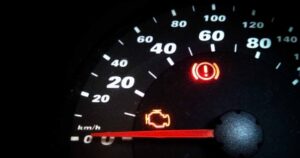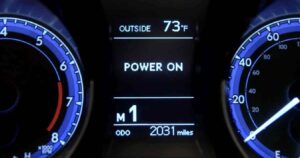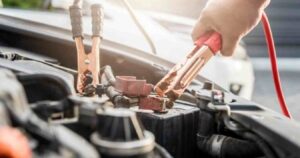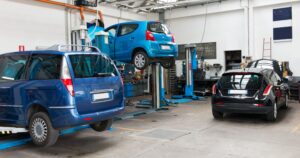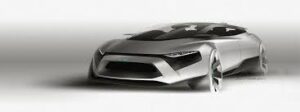When it comes to painting cars, achieving a flawless finish requires precision and the right tools. One such essential tool is an air compressor.
An air compressor for painting cars provides a steady stream of compressed air that enables efficient paint application, resulting in a professional-looking paint job.
In this article, we will explore the importance of air compressors in car painting, the different types available, factors to consider when choosing one, the benefits they offer, and some useful tips for using them effectively.
Table of Contents
ToggleBrief Overview of the Importance of Air Compressors in Car Painting
Painting a car requires a consistent and controlled airflow to atomize the paint particles, ensuring an even and smooth application. This is where an air compressor plays a vital role. By compressing air and delivering it through a spray gun, an air compressor allows for precise control over the paint flow and pressure, giving you the ability to achieve professional results.
Importance of Choosing the Right Air Compressor for the Job
Selecting the right air compressor for car painting is crucial to ensure optimal performance and quality outcomes. The wrong choice may result in uneven paint distribution, overspray, or an insufficient air supply, leading to unsatisfactory results. Therefore, it’s essential to consider the following factors before making a decision.
Types of Air Compressors for Car Painting
Single-stage compressors: These compressors have one piston that compresses the air to the desired pressure. They are suitable for small to medium-sized painting projects and offer a cost-effective solution.
Two-stage compressors: Two-stage compressors have two pistons that work in tandem, providing higher pressure and greater air capacity. They are ideal for large-scale car painting projects or professional use.
Oil-free compressors: Oil-free compressors eliminate the need for lubrication, making them low-maintenance and convenient. They are suitable for automotive painting as they prevent any oil contaminants from mixing with the paint.
Portable compressors: If mobility is important to you, portable air compressors are a great choice. They allow you to move around your workspace easily and work on different parts of the vehicle without restrictions.
Factors to Consider When Choosing an Air Compressor for Car Painting
To make an informed decision, consider the following factors:
Horsepower and CFM rating: Horsepower determines the compressor’s power, while CFM (cubic feet per minute) indicates the airflow capacity. Ensure that the compressor has sufficient horsepower and CFM rating to meet the demands of your painting project.
Tank size: A larger tank allows for longer continuous operation without the need for frequent motor cycling. It provides a more stable air supply, reducing the likelihood of pressure drops during painting.
Portability: Depending on your requirements, choose between stationary and portable compressors. Portability is advantageous when you need to move the compressor to different locations or work on multiple vehicles.
Noise level: Consider the noise level of the air compressor, especially if you’ll be working in a residential area or noise-sensitive environment. Look for compressors with noise reduction features or those specifically designed for quiet operation.
Air pressure: The air pressure required for painting cars will vary depending on the type of paint you are using. Most air compressors for cars will have an air pressure of at least 150 PSI.
Flow rate: The flow rate is the amount of air that the compressor can deliver per minute. A higher flow rate will allow you to paint more quickly.
Price: Air compressors can range in price from a few hundred dollars to several thousand dollars. It is important to set a budget before you start shopping.
Oil vs. oil-free compressors: Decide whether you prefer the convenience of an oil-free compressor or are willing to maintain an oil-lubricated one. Oil-free compressors are popular in car painting applications due to their ease of use and lower risk of oil contamination.
Benefits of Using an Air Compressor for Car Painting
Using an air compressor for car painting offers several advantages that contribute to a high-quality paint job. Let’s explore some of these benefits:
Consistent Air Pressure for Even Painting
With an air compressor, you can achieve a consistent and controlled airflow, ensuring even paint distribution on the car’s surface. This consistency minimizes the risk of paint streaks, drips, or uneven patches, resulting in a smooth and professional finish.
Efficient Use of Paint and Reduced Overspray
Air compressors enable precise control over the paint flow and pressure, allowing you to achieve the desired coverage with minimal wastage. By delivering a fine mist of paint particles, they also help reduce overspray, resulting in a more economical and efficient painting process.
Faster Drying Time
Compressed air aids in the drying process by accelerating the evaporation of solvents in the paint. This leads to faster drying times, allowing you to apply multiple coats or complete the painting job in a shorter time frame.
Versatility in Paint Application
Air compressors provide versatility in paint application techniques. They can be used for various finishes, including basecoats, clearcoats, and specialty paints. Whether you’re aiming for a glossy shine or a textured effect, an air compressor gives you the flexibility to achieve different paint finishes.
Tips for Using an Air Compressor for Car Painting
To maximize the benefits and ensure a successful painting process, consider the following tips:
Proper Setup and Maintenance: Follow the manufacturer’s instructions for setting up and maintaining your air compressor. Regularly check for leaks, clean or replace filters, and ensure proper lubrication if using an oil-lubricated compressor.
Safety Precautions: Wear appropriate safety gear, including goggles, a respirator, and protective clothing, to protect yourself from paint fumes and overspray. Work in a well-ventilated area to minimize the inhalation of harmful substances.
Choosing the Right Paint and Cleaning Materials: Select high-quality automotive paints suitable for your specific car painting needs. Ensure you have the necessary cleaning materials, such as paint thinner and brushes, for proper maintenance and cleanup after each painting session.
Recommended Brands for Air Compressors Used for Painting Cars
Several reputable brands offer air compressors suitable for car painting applications. While personal preferences may vary, some recommended brands known for their quality and reliability include:
- DeWalt
- Porter Cable
- Craftsman
- Ingersoll Rand
- Campbell Hausfeld
- California Air Tools
- Husky
- Makita
- Metabo
- Airpro
These brands offer a variety of air compressors with different features and price points, so you can find one that fits your needs and budget.
Once you have considered these factors, you can start shopping for an air compressor for painting cars. Be sure to read reviews and compare prices before you make a purchase.








